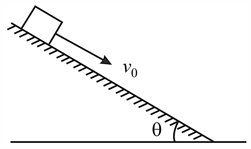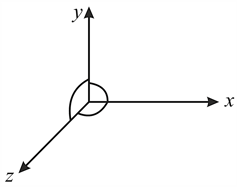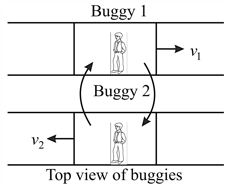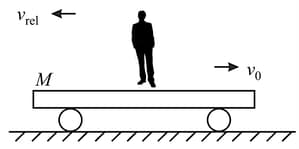B M Sharma Solutions for Chapter: System of Particles and Centre of Mass, Exercise 3: CONCEPT APPLICATION EXERCISE
B M Sharma Physics Solutions for Exercise - B M Sharma Solutions for Chapter: System of Particles and Centre of Mass, Exercise 3: CONCEPT APPLICATION EXERCISE
Attempt the practice questions on Chapter 1: System of Particles and Centre of Mass, Exercise 3: CONCEPT APPLICATION EXERCISE with hints and solutions to strengthen your understanding. Physics For Joint Entrance Examination JEE (Advanced): Mechanics II solutions are prepared by Experienced Embibe Experts.
Questions from B M Sharma Solutions for Chapter: System of Particles and Centre of Mass, Exercise 3: CONCEPT APPLICATION EXERCISE with Hints & Solutions
Does the centre of mass of a rocket in free space accelerate? Explain. Can the speed of a rocket exceed the exhaust speed of the fuel? Explain.
Discuss the possibility of conservation of linear momentum of a block moving on a rough inclined plane if

A shell is fired from a cannon with a speed of at an angle with the vertical At the highest point of its trajectory, the shell explodes into two fragments of masses in the ratio The lighter fragment moves vertically upwards with an initial speed of What is the speed of the heavier fragment at the time of explosion?
A mud ball at rest explodes into three fragments of masses in the ratio The two equal masses move with velocities and Find the velocity of the third mass.

(a) A rail road car of mass is moving without friction on a straight horizontal track with a velocity A man of mass lands on it normally from a helicopter. What will be the new velocity of the car?
(b) If now the man begins to run on it with speed with respect to car in a direction opposite to motion of the car, what will be the new velocity of the car?
Two trolleys and are free to move on a level frictionless track, and are initially stationary. A man on trolley throws a bag of mass with a horizontal velocity of with respect to himself on to trolley of mass The combined mass of trolley (excluding bag) and the man is Find the ratio of velocities of trolleys and just after the bag lands on trolley
Two identical buggies and with one man in each move along parallel rails. When the buggies are opposite to each other, the men jump in a direction perpendicular to the direction of motion of buggies, so as to exchange their places. As a consequence, buggy stops and buggy keeps moving in the same direction with its final velocity Find the initial velocities and of buggies. Mass of each buggy (without man) equals mass of each man is ignore frictional effects anywhere and the buggies are constrained to move along the rails only.

(a) A rail road flat car of mass can roll without friction along a straight horizontal track (figure). Initially, a man of mass is standing on the car which is moving to the right with speed What is the change in velocity of the car if the man runs to the left so that his speed relative to the car is just before he jumps off at the left end?
(b) If there are men each of mass on the car, should they all run and jump off together or should they run and jump one by one in order to give a greater velocity to the car?

